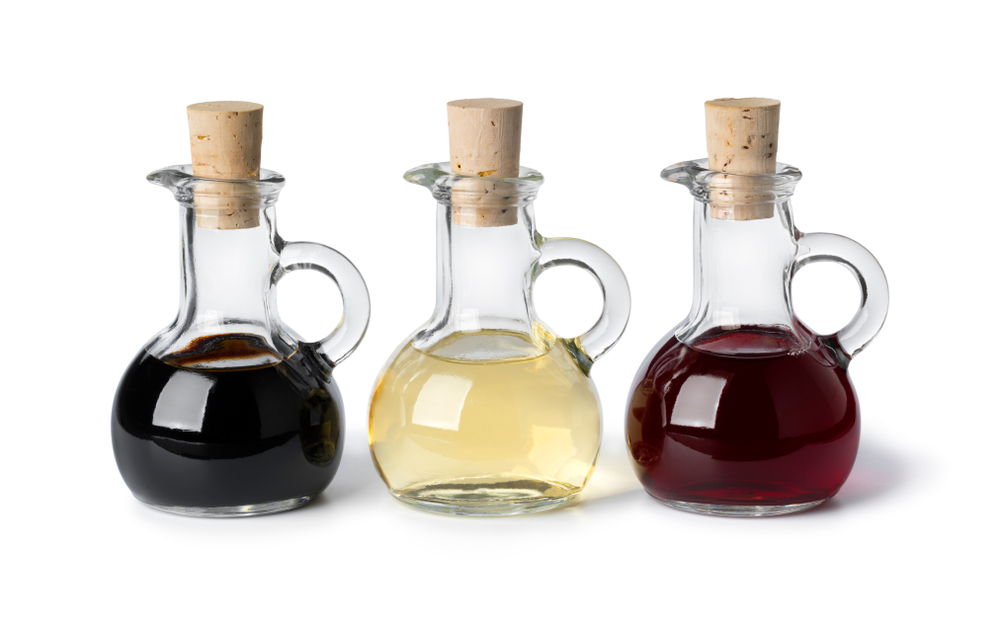The word vinegar comes form the French term “vin aigre” which means sour wine. It’s made by fermenting alcohol which can come from a variety of sources – rice (used to make rice wine), fruits such as apples (used to make apple cider) and grapes (used to make red wine, white wine and champagne) and malted barley (used to make scotch) to name a few.
This is how we get the different types of vinegars – white vinegar, rice vinegar, fruit vinegars, apple cider vinegar, red wine vinegar, white wine vinegar, champagne vinegar and malt vinegar.
How is vinegar made?
Vinegar is made when alcohol gets fermented by bacteria which produces acetic acid – a sour tasting compound (this is what is in white vinegar). The source of alcohol that the alcohol is made from determines the type of vinegar that is made and the various flavor components that result.
What about balsamic vinegar?
Unlike other types of vinegar, balsamic vinegar is made from grape juice and not alcohol. It’s made in the areas of Modena and Reggio Emilia, Italy and it is made from white Trebbiano grapes. It gets its name from the word “balsam” which means to heal or cure as it was used in the middle ages for therapeutic purposes.
How is balsamic vinegar made?
Balsamic vinegar is made by taking white Trebbiano grapes and boiling them down so that their juice becomes a thick syrup. It is then aged and fermented for years in barrels of varying sizes which concentrates its flavour. Over the period that it ferments it under goes a number of oxidative changes that changes its colour from light to dark. Depending on how long it is aged impacts the complexity of its flavor and concentration. Balsamic vinegar can be ages anywhere from 3 to 5 years, 6 to 12 years to even 12 to over 100 years old.
The colour of the label it’s stamped with indicates how long it’s been aged
Balsamic vinegars have a red label if they are aged for at least 12 years, a silver label if they are aged for at least 18 years and a gold label if they are aged for 25 years or more. The word stravecchio indicates that the balsamic vinegar has been aged at least 25 years.
Like many foods in Europe, traditional balsamic vinegar – Aceto Balsamico Tradizionale di Modena” (Traditional Balsamic Vinegar of Modena) and “Aceto Balsamico Tradizionale di Reggio Emilia” (Traditional Balsamic Vinegar of Reggio Emilia) are protected names and must adhere to strict production practices.
What is white balsamic vinegar?
White balsamic vinegar is made by combining the syrup from the Trebianno grape with white wine vinegar. The grapes are only aged for one year. As a result, it doesn’t darken or have the same complexities of flavor that dark balsamic vinegar has and it’s as sweet or syrupy.
The reason why people use white balsamic vinegar instead of dark balsamic vinegar is mainly for aesthetic purposes (i.e. if you are cooking a light coloured dish and don’t want to darken it).
